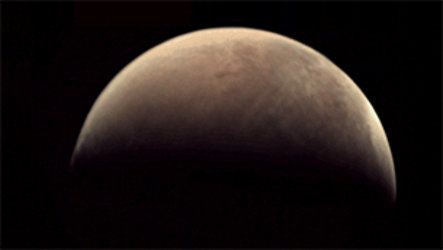Digging for hidden treasure on Mars
ESA’s Mars Express has spent nearly ten years imaging the Red Planet, and there are plenty of hidden treasures buried in the mission’s rich picture archive.
HRSCview is a web interface to the archive that offers a chance to browse and explore any region of the Red Planet through the eyes of Mars Express with images that have not necessarily been highlighted by formal media releases.
As Planetary Society blogger Bill Dunford puts it: “The glamour shots of the planets that space agencies release are always gorgeous…but sometimes it’s fun to wander out on your own.”
Indeed, Bill took a hike through the maze of valleys in the Noctis Labyrinthus region of Mars earlier this year using HRSCview as a tour guide, to produce this beautiful mosaic.
Noctis Labyrinthus, the ‘Labyrinth of the Night’, is on the western edge of Valles Marineris, the Grand Canyon of Mars. It was first captured by Mars Express in June 2006.
Noctis Labyrinthus is a complex tectonic region intimately linked to uplift of the nearby Tharsis volcanic region, home to the biggest volcano in the Solar System, Olympus Mons.
As the Tharsis bulge swelled upwards, the planet’s crust stretched, resulting in parts of the surface fracturing along parallel fault lines, producing sunken features known as graben.
Some of the graben in this scene are heavily eroded, with rocky debris scattered at their bases. Younger formations are visible on the upper surfaces, with fault lines crossing each other in different directions, suggesting many episodes of tectonic stretching.
This scene is a composite of around half a dozen images. Bill selected the images he was interested in from HRSCview and stitched them together, filling in a few small gaps in the data by sampling the pixels immediately adjacent. He also brightened the resulting picture.
If you make an expedition through the martian landscape using HRSCview and create images like this, please share them with us via email (scicom[@]esa.int) or Twitter (@esascience). Who knows what treasures you may find?















 Germany
Germany
 Austria
Austria
 Belgium
Belgium
 Denmark
Denmark
 Spain
Spain
 Estonia
Estonia
 Finland
Finland
 France
France
 Greece
Greece
 Hungary
Hungary
 Ireland
Ireland
 Italy
Italy
 Luxembourg
Luxembourg
 Norway
Norway
 The Netherlands
The Netherlands
 Poland
Poland
 Portugal
Portugal
 Czechia
Czechia
 Romania
Romania
 United Kingdom
United Kingdom
 Slovenia
Slovenia
 Sweden
Sweden
 Switzerland
Switzerland




































